UNESCO World Heritage Sites in Russia
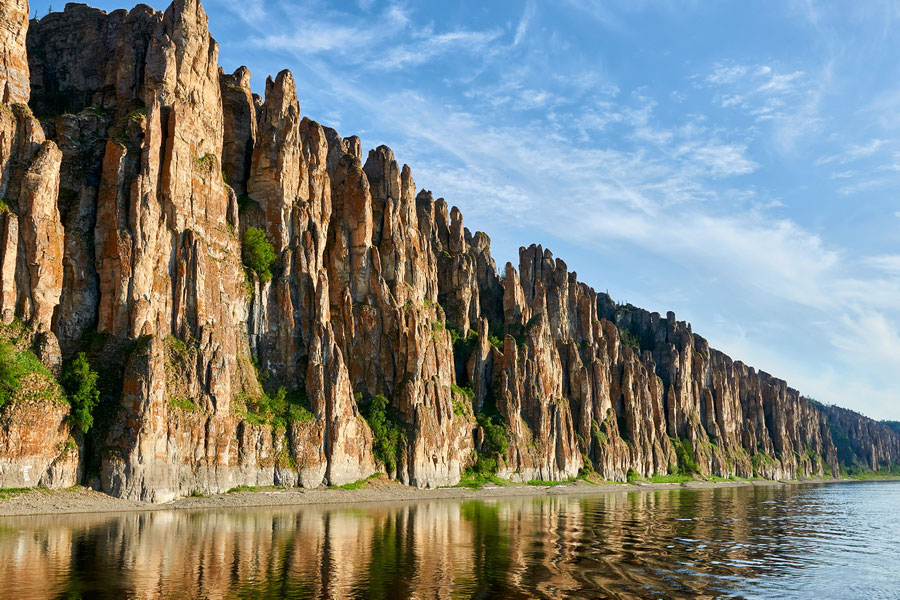
Within the spectrum of UNESCO World Heritage Sites, Russia shines brightly. As the successor to the Soviet Union, which first joined UNESCO in 1954, the Russian Federation today boasts the greatest number of these distinguished sites across the entire Commonwealth of Independent States (CIS).
Russia's relationship with UNESCO is a dynamic and engaged one, with collaborative efforts spanning across cultural, educational, and scientific domains. Testament to this ongoing alliance is the UNESCO office in Moscow, a hub that serves to foster and fortify the dialogue between different peoples and cultures.
UNESCO World Heritage Sites in Russia
There are 30 sites included on the Russian UNESCO World Heritage List:
- The Historic Center of St. Petersburg and Related Groups of Monuments (included in 1990),
- The Kizhi Pogost (included in 1990),
- Kremlin and Red Square, Moscow (included in 1990),
- White Monuments of Vladimir and Suzdal (included in 1992),
- Cultural and Historic Ensemble of the Solovetsky Islands (included in 1992),
- Historic Monuments of Veliky Novgorod and surroundings (included in 1992),
- Architectural Ensemble of the Trinity Sergius Lavra in Sergiev Posad (included in 1993),
- Church of the Ascension, Kolomenskoye (Moscow) (included in 1994),
- The Virgin Komi Forests (included in 1995),
- Volcanoes of Kamchatka (included in 1996, appeared on the updated list in 2001 due to territorial expansion),
- Lake Baikal (included in 1996),
- Golden Mountains of Altai (included in 1998),
- The Western Caucasus (included in 1999),
- The Ensemble of the Ferapontov Monastery (included in 2000),
- Historic and Architectural Complex of the Kazan Kremlin (included in 2000),
- Curonian Spit (included in 2000),
- Central Sikhote-Alin (included in 2001, and updated in 2018 due to territorial expansion),
- Ubsunur hollow/ Uvs Nuur Basin (included in 2003),
- Citadel, Ancient City and Fortress Buildings of Derbent (included in 2003),
- Ensemble of the Novodevichy Convent in Moscow (included in 2004),
- Natural System of Wrangel Island Reserve (included in 2004),
- The Struve Geodetic Arc (included in 2005),
- Historical Centre of the City of Yaroslavl (included in 2005),
- Putorana Plateau (included in 2010),
- Lena Pillars Nature Park (included in 2012),
- Bolgar Historical and Archaeological Complex (included in 2014),
- Assumption Cathedral and Monastery of the town-island of Sviyazhsk (included in 2017),
- Landscapes of Dauria (included in 2017),
- The Churches of the Pskov School of Architecture (included in 2019),
- Petroglyphs of Lake Onega and the White Sea (included in 2021).
The Historic Center of St. Petersburg and Related Groups of Monuments
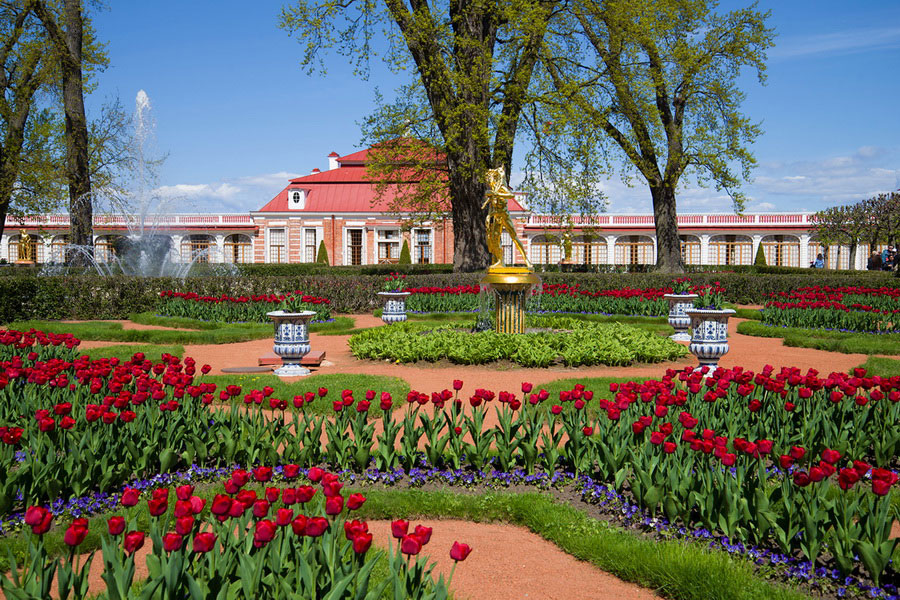
Established in 1703 by Peter the Great, the city of St. Petersburg stands as a living testament to Russian history. Its beautiful cityscape includes an impressive collection of Baroque and Neoclassical buildings, the enchanting Peterhof and Tsarskoe Selo, the maritime city of Kronstadt, a maze of over 400 bridges and canals, and breathtaking landscapes. Despite this eclectic blend of architectural styles, the city maintains a harmonious aesthetic. Its historic center boasts an array of stunning architectural wonders.
The Kizhi Pogost
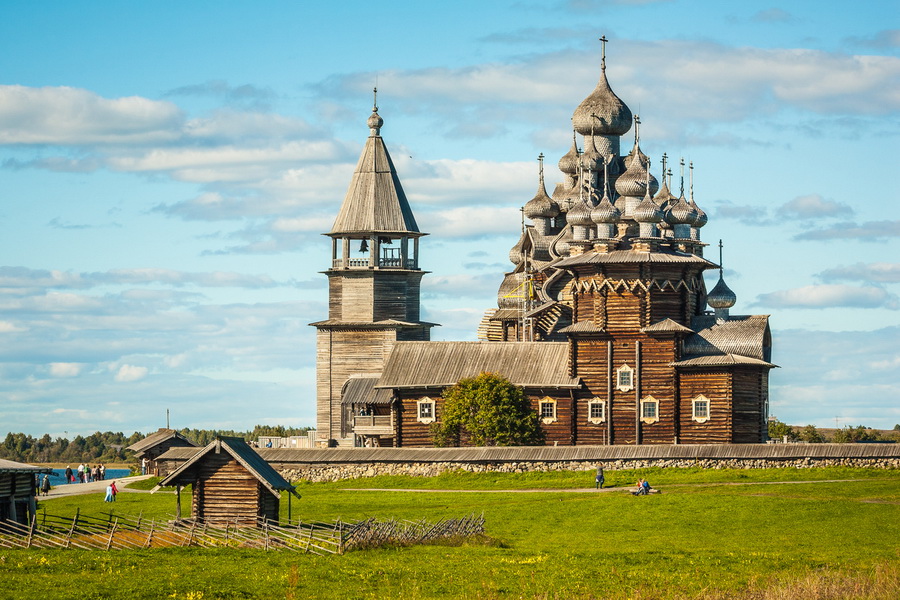
The Kizhi Pogost, located on an island in Lake Onega, Karelia, captivates visitors with its picturesque tableau of 18th-century wooden churches (Pokrovsky and Preobrazhensky) and a 19th-century bell tower. These structures were built on the site of previous churches bearing the same names, which tragically burnt down in the late 17th century.
Kremlin and Red Square, Moscow
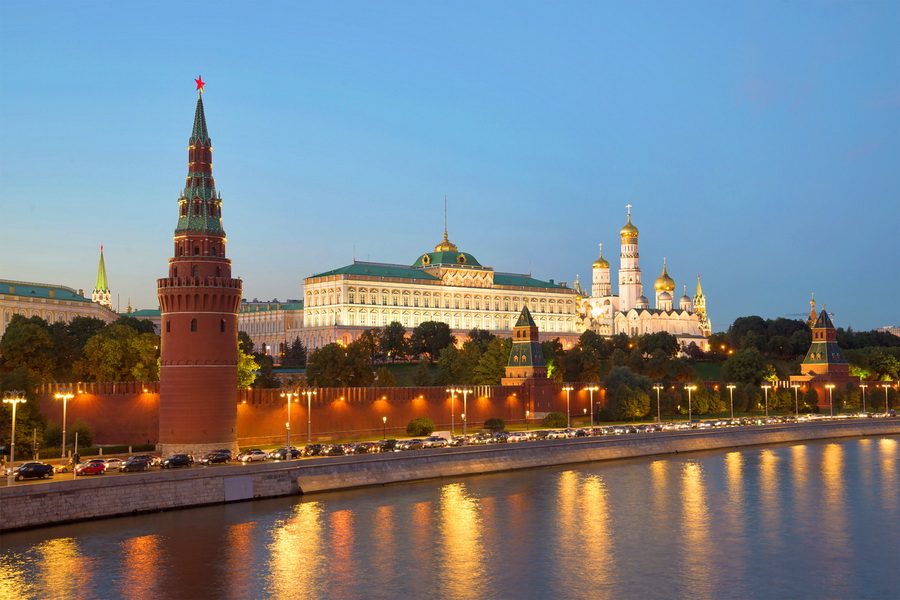
These iconic landmarks serve as a symbol of Russia's capital city. The Kremlin's history dates back to the mid-12th century, and by the next century, it had become the official residence of the rulers. Several medieval Orthodox churches grace the Kremlin's grounds, including the renowned Church of St. Basil the Blessed. This particular church is familiar to all Russians, as well as any foreign visitor who has had the opportunity to visit the Red Square.
White Monuments of Vladimir and Suzdal
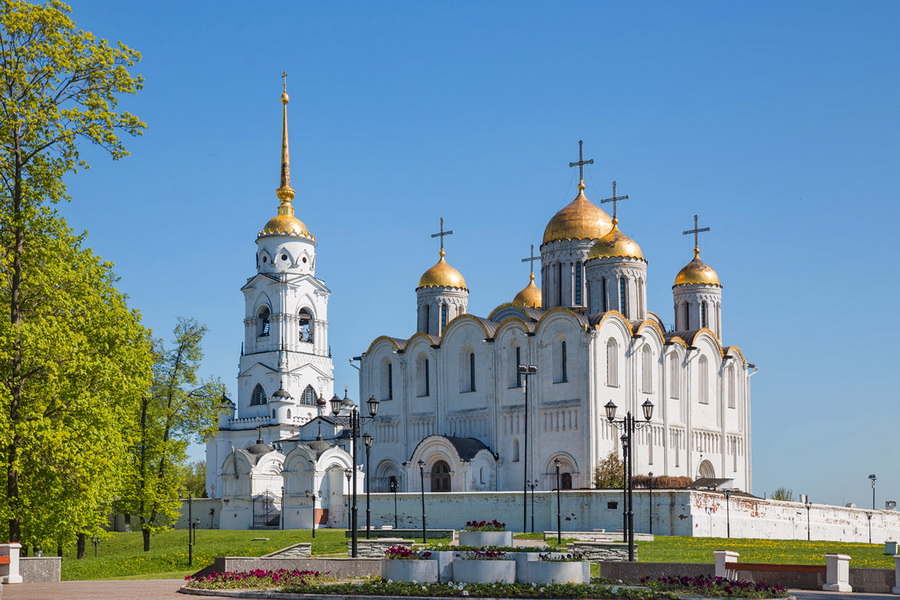
The white-stone monuments of Vladimir and Suzdal predominantly consist of Orthodox temples from these ancient cities, each washed in a hue of white. Many of these spiritual structures date back to the 12th century. Notable attractions in Vladimir include the Golden Gate, Assumption Cathedral, Church of the Intercession on the Nerl, and the Nativity of the Virgin Cathedral. Meanwhile, in Suzdal, the Spaso-Evfimiev Monastery, the Kremlin, and the Cathedral of Christ the Nativity draw significant attention. The Cathedral of Boris and Gleb, situated in the village of Kideksha, also forms part of these revered white-stone monuments.
Historical and Cultural Complex of the Solovetsky Islands
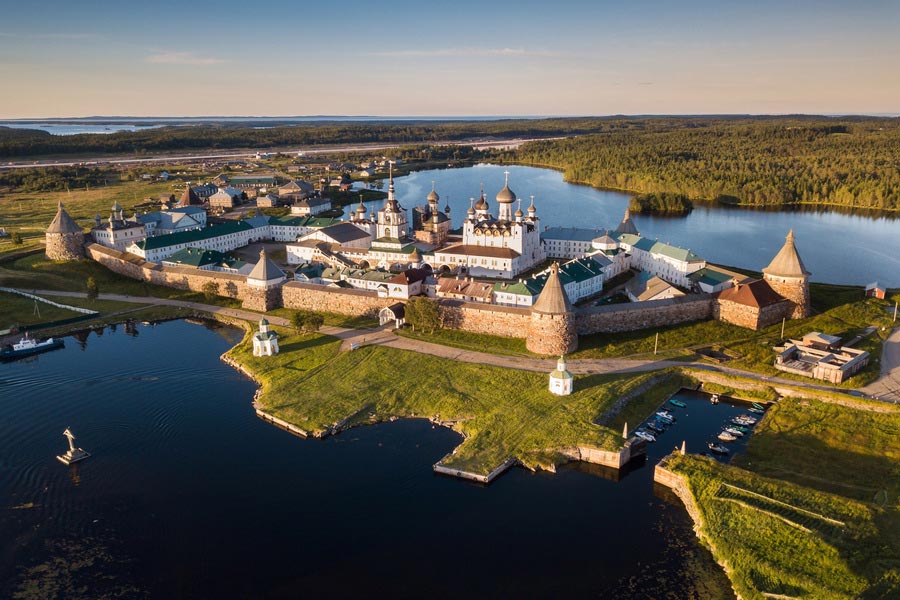
The Solovetsky Archipelago comprises six large islands and a hundred smaller ones, bearing evidence of human settlements from as early as the 5th millennium BC. For six centuries, the Solovetsky Islands have been known for their men's monastery. This spiritual haven encompasses various temples, cells, auxiliary buildings, stone labyrinths, and more.
Historic Monuments of Veliky Novgorod and surroundings
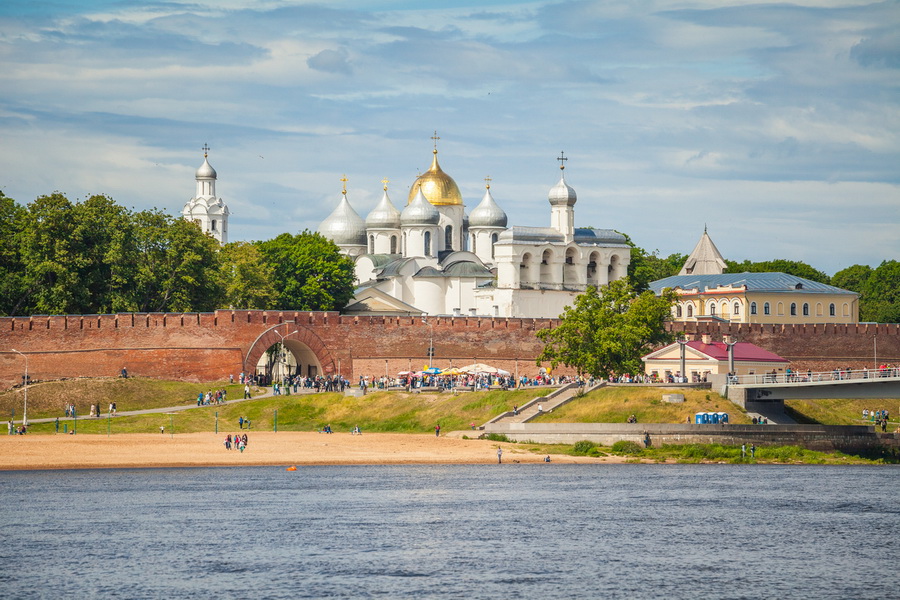
Veliky Novgorod, established in the 9th century, was designated as the first capital of Russia. As it also served as the residence of Orthodox bishops, it became a significant spiritual hub. Its collection of architectural wonders includes several monasteries, the Novgorod Detinets, and many churches. The buildings of the Novgorod Kremlin and Yaroslav's Court also provide intriguing insights into the city's historical tapestry.
Architectural Ensemble of the Trinity Sergius Lavra in Sergiev Posad
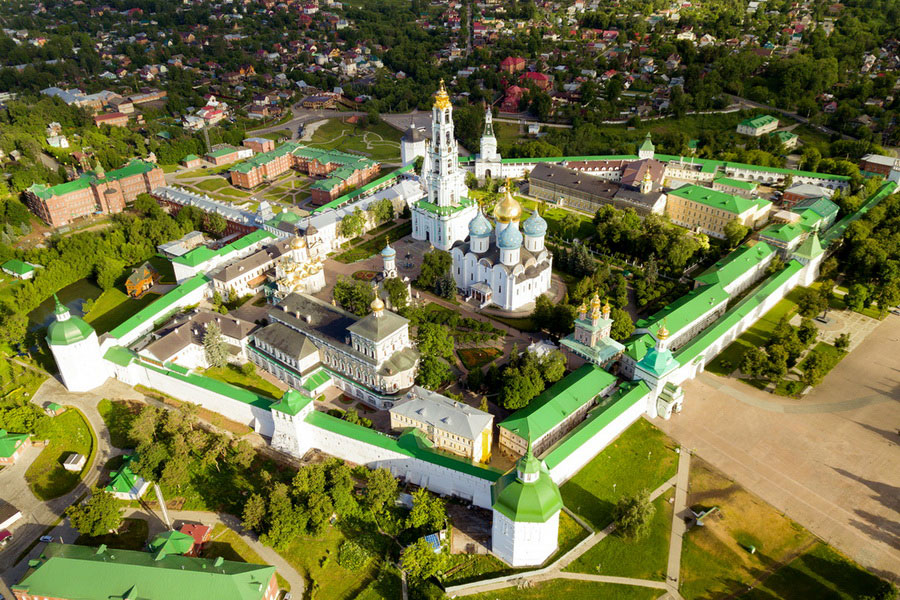
Considered one of Russia's most renowned monasteries, the Trinity Sergius Lavra was established in the 14th century by the Orthodox Saint Sergius of Radonezh. The lavra holds the title of the largest monastery in Russia. The "Trinity" icon, a masterpiece by Andrei Rublev, was preserved within the monastery's walls for four centuries. Although currently housed in the Tretyakov Gallery, the iconic artwork is occasionally displayed in the Lavra during the commemoration of Sergius of Radonezh and Trinity Day.
Church of the Ascension, Kolomenskoye
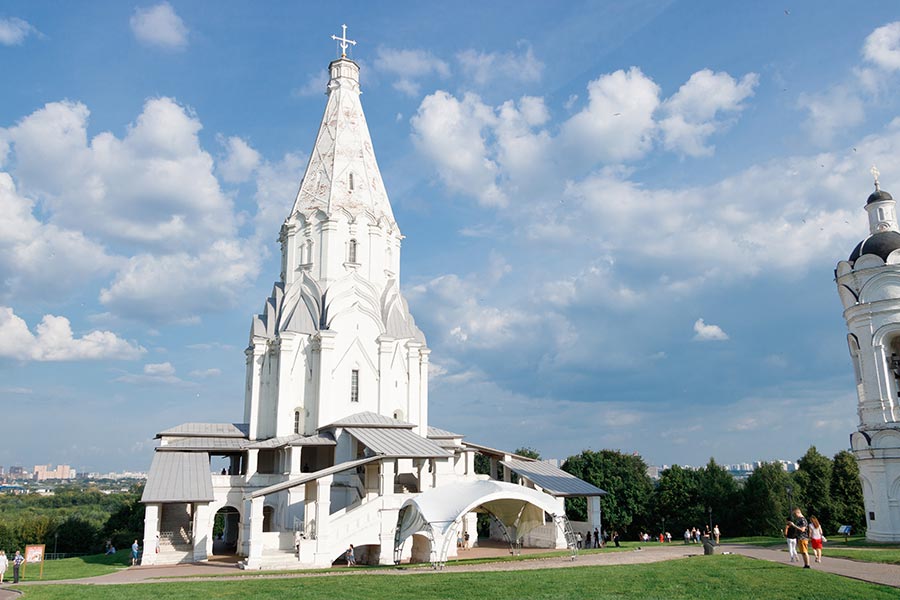
The Church of the Ascension, built in the early half of the 16th century, coincided with the birth of the future Tsar, Ivan the Terrible. The unique architectural style of this church initiated a new trend in Russian temple construction, significantly influencing Eastern European religious architecture.
The Virgin Komi Forests
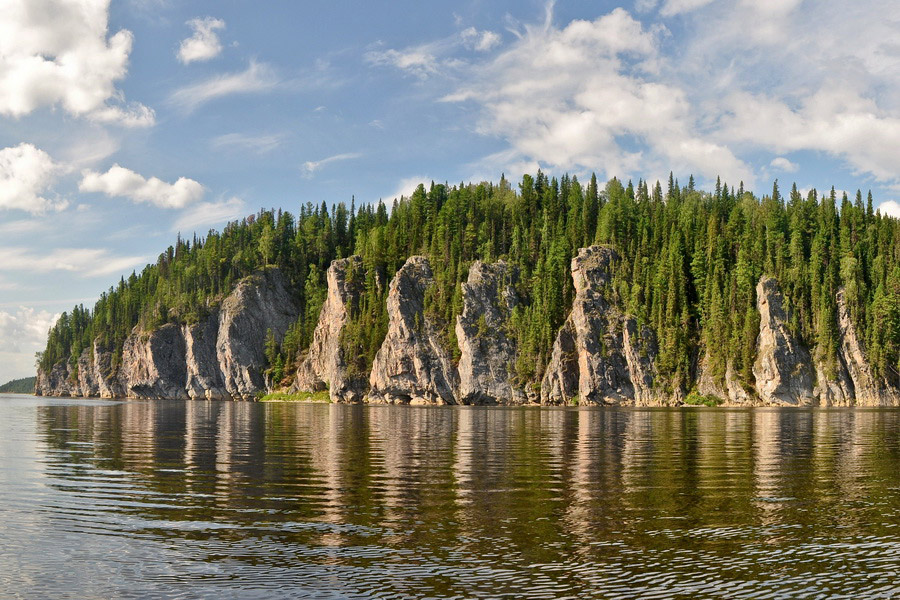
Covering nearly 3.5 million hectares, the pristine Komi Forests consist of vast expanses of towering coniferous trees. Owing to their immense size, these forests are considered Europe's largest untouched wilderness. The Pechoro-Ilych Nature Reserve and the Yugyd Va National Park, nestled within the Komi Forests, are home to hundreds of diverse animal, fish, and bird species.
Volcanoes of Kamchatka
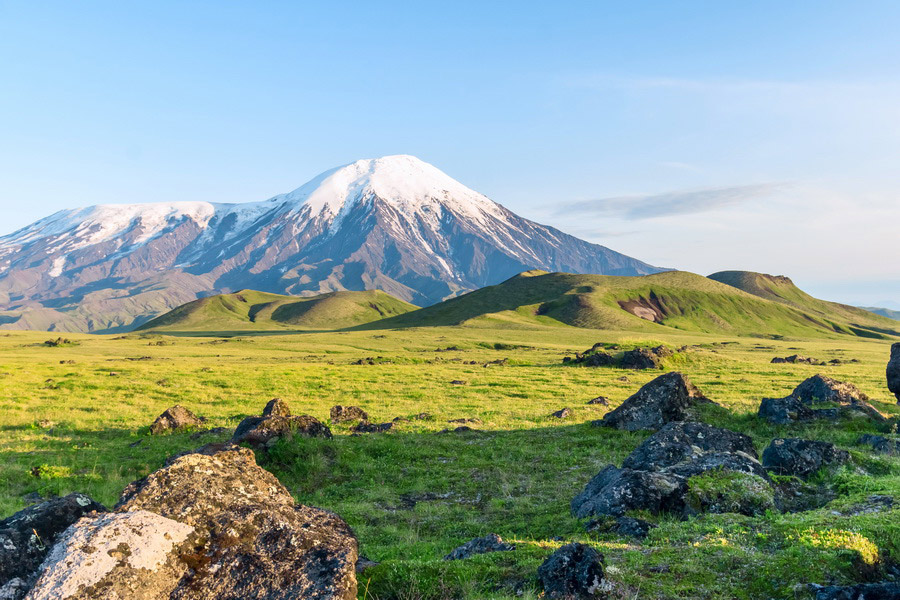
This extraordinary site showcases over 300 volcanoes, both active and dormant. It offers breathtaking vistas of not just the volcanic formations, but also the surrounding lakes and vegetation. The most popular volcanoes here are Mutnovsky, Avachinsky, and Gorely. Additionally, the Klyuchevskii Nature Park can be found within this dramatic landscape.
Lake Baikal
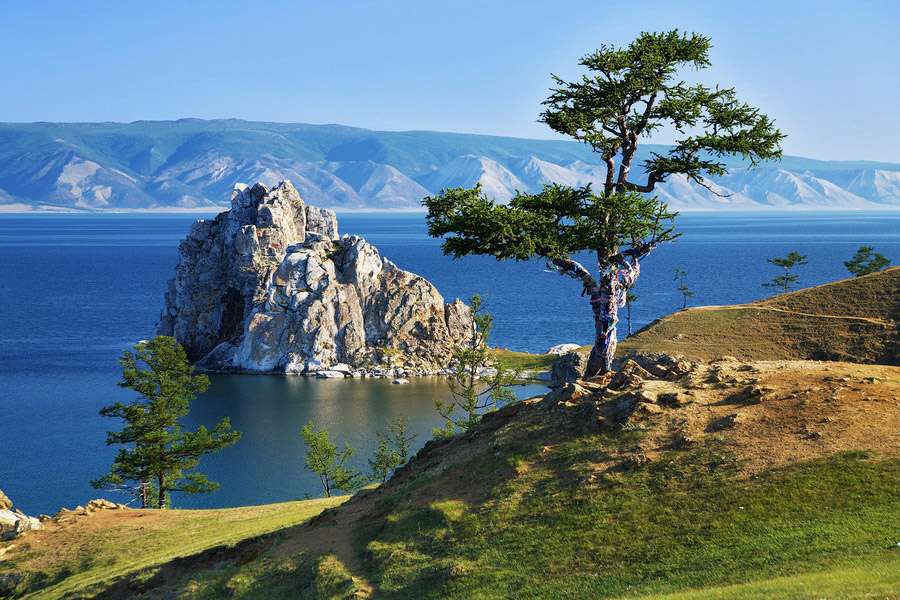
Lake Baikal proudly holds the title of the world's deepest and oldest lake. Formed roughly 25 million years ago, this spectacular body of water reaches depths of up to 1,700 meters. Impressively, it houses a fifth of the world's fresh water reserves. Whether it's summer or winter, Lake Baikal is a stunning sight that draws thousands of tourists from around the globe every year.
The Golden Mountains of Altai
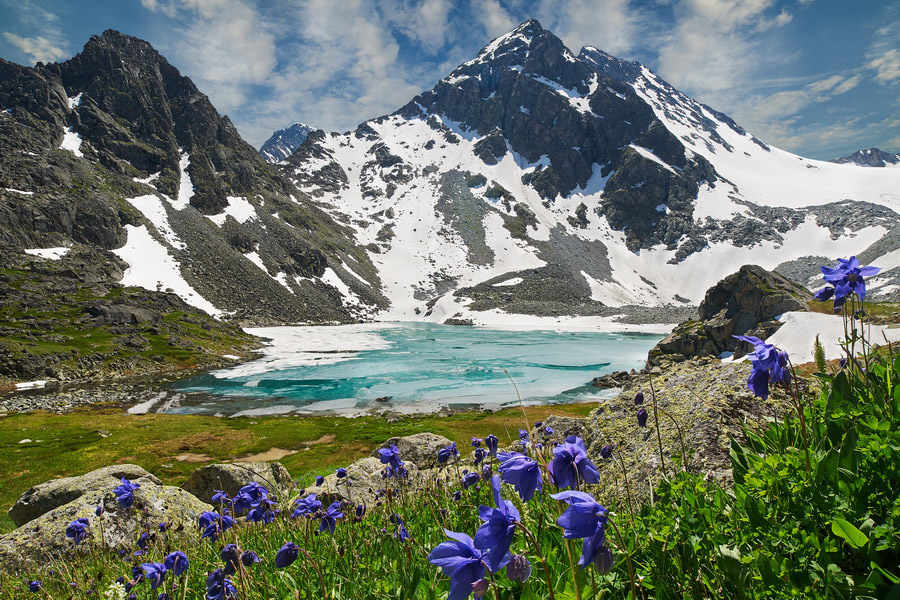
The Altai Mountains present a fascinating and diverse landscape. They are home to the sources of the Irtysh and Ob rivers, the Altai and Teletsk reserves, as well as forest-steppes, buffer zones, and much more. An array of wildlife, including some endangered species, resides here. Visitors are drawn to the ancient Pazyryk burial sites dating back to the 4th and 3rd centuries BC.
Western Caucasus
Spanning 275,000 hectares, the Western Caucasus offers a sprawling expanse of alpine meadows, pastures, and forests. Notably, the area has seen minimal human interference, preserving its natural state. It is home to a rich variety of mammals, birds, and fish. The Caucasus State Reserve, along with several natural parks, further contributes to the area's ecological value.
The Ensemble of the Ferapontov Monastery
Nestled in the Vologda region, the Ferapontov Monastery stands as a remarkable spiritual complex from the 15th to 17th centuries. It has served as a place of exile for Patriarch Nikon and the consecration site for John III. The monastery is also renowned for its beautiful wall paintings by Dionisy.
Historic and Architectural Complex of the Kazan Kremlin
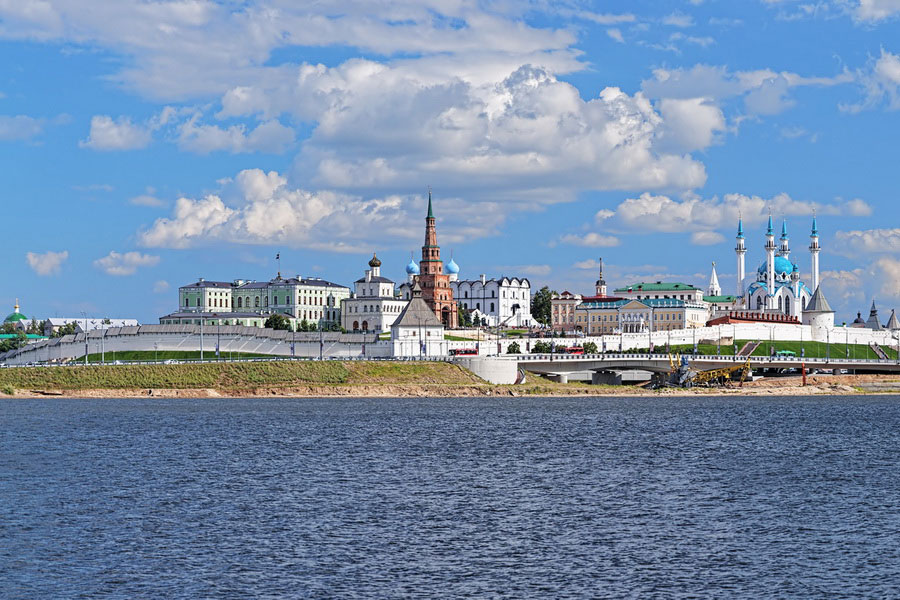
The Kazan Kremlin, standing on the land of the former Muslim Khanate of Kazan, was established following Ivan the Terrible's conquest in the mid-16th century. The Kremlin, which has remarkably survived till today, is one of the few preserved architectural ensembles from the 17th to 19th centuries within Kazan. It encompasses a mix of cathedrals and churches, demonstrating a harmonious blend of exceptional Islamic and Orthodox architecture.
The Curonian Spit
The Curonian Spit showcases an intriguing blend of sandy and forest landscapes along its coastal strip, molded by the combined forces of winds, tidal movements, and human activity. This World Heritage Site is shared by Russia and Lithuania, adding an international dimension to its charm.
Central Sikhote Alin
Located in the Far East, the Central Sikhote Alin mountain range houses two nature reserves, the Sikhote-Alin and Gorali, and the Bikin National Park, which encompasses the Ussuri Taiga. Conservation efforts in the region focus on the endangered Amur tiger species, emphasizing the region's significant role in global wildlife preservation.
Ubsunur Hollow
Predominant features of the Ubsunur Hollow include the shallow, highly saline Ubsu-Nur Lake and numerous ancient artifacts such as petroglyphs, runic inscriptions, and burial mounds. The area also boasts diverse landscapes like wetlands, forests, deserts, swamps, glaciers, and even tundra. Shared with Mongolia, this site enjoys UNESCO's protective oversight.
Citadel, Ancient City and Fortress Buildings of Derbent
Derbent is Russia's oldest city, with a history stretching back over 2,000 years, although there were settlements here as far back as the 8th century BC. The city's prime attraction is its ancient fortress, which sprawls several kilometers in length. A visit to Derbent should include exploring the Naryn-Kala, the oldest mosque in the CIS, the winter palace of Fatali Khan, and other significant historical sites.
Ensemble of the Novodevichy Convent in Moscow
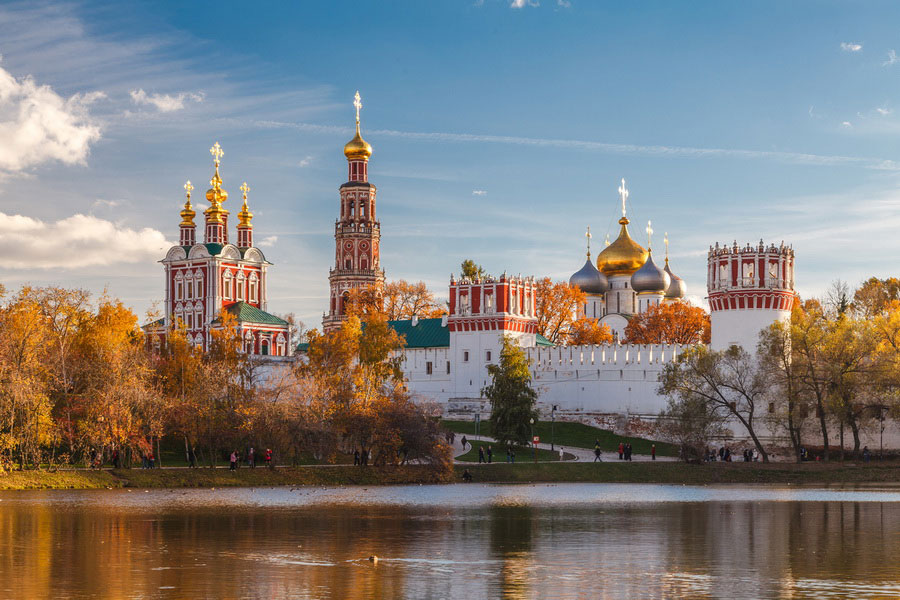
The Novodevichy Convent was established in the 16th century and originally served both spiritual and defensive roles. Within the monastery's grounds, you'll find eight cathedrals, five churches, a bell tower, and two chapels. The oldest cathedral, dedicated to the icon of the Mother of God "Smolensk," dates back to 1525. The convent also houses the Novodevichy Cemetery, which was founded in the mid-16th century. The cemetery is the final resting place for many renowned individuals, including writers Vladimir Mayakovsky, Mikhail Bulgakov, and Ilya Ilf, singer Mark Bernes, and director Sergey Eisenstein.
Natural System of Wrangel Island Reserve
Located beyond the Arctic Circle, this reserve encompasses both Wrangel and Herald Islands. Wrangel Island is home to the world's largest population of Pacific walrus and hosts numerous dens of polar bears. It is also a stopping point for thousands of gray whales traveling from Mexico and more than 100 species of migratory birds.
The Struve Geodetic Arc
This chain of reference geodetic points, protected by UNESCO, spans not just Russia, but also Belarus, Estonia, Finland, Latvia, Lithuania, Moldova, Norway, Sweden, and Ukraine. These locations contain survey points plotted by the astronomer Friedrich Struve between 1816 and 1855. His work enabled accurate measurement of a large section of a meridian, which in turn helped determine the Earth's size and exact shape.
Historical Centre of the City of Yaroslavl
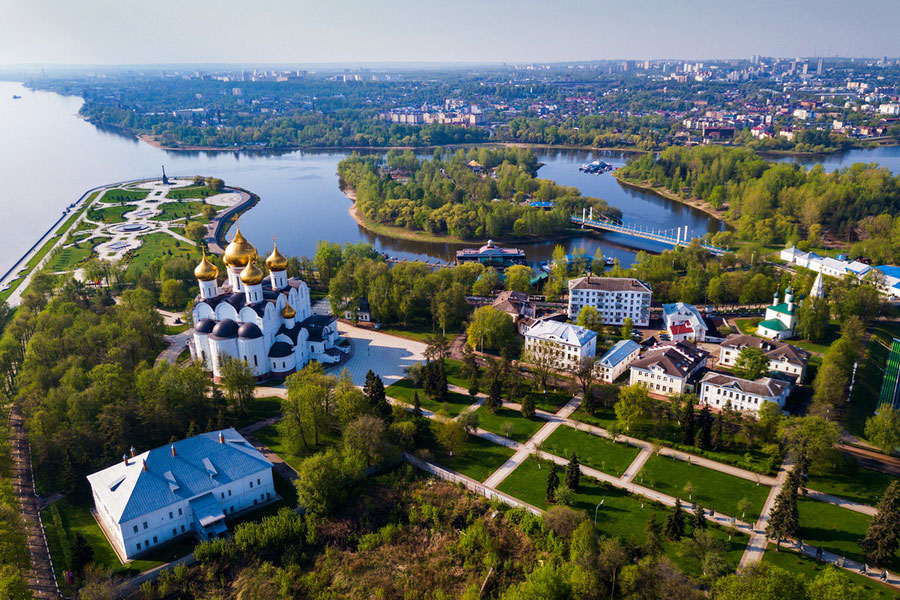
Yaroslavl is among Russia's oldest cities, emerging as a significant trade center as early as the 11th century. Today, it retains many historic buildings, predominantly found within its city center, featuring 16th to 18th-century edifices in neoclassical style. Yaroslavl also boasts numerous churches and monasteries with captivating architecture and frescoes. Its oldest monastery, the Spaso-Preobrazhensky, was established at the beginning of the 13th century and is famed as the discovery site of the sole copy of "The Tale of Igor's Campaign".
Putorana Plateau
This Siberian plateau is home to the Putorana State Nature Reserve. On this territory there is an arctic desert as well as tundra, taiga, forest tundra, canyons, waterfalls, lakes and rivers. Human influence is minimal here, so the plateau appears in its pristine beauty. And reindeer migrate through these territories.
Lena Pillars Nature Park
This nature park, located along the Lena River in Yakutia, differs from the others by the fact that there are many rock pillars, some of which are up to 100 meters long. These pillars appeared as a result of sharp temperature fluctuations: from -60 to +40 degrees Celsius. Because of this, there have been constant freezing and thawing processes that have affected the limestone rocks for centuries.
Bolgar Historical and Archaeological Complex
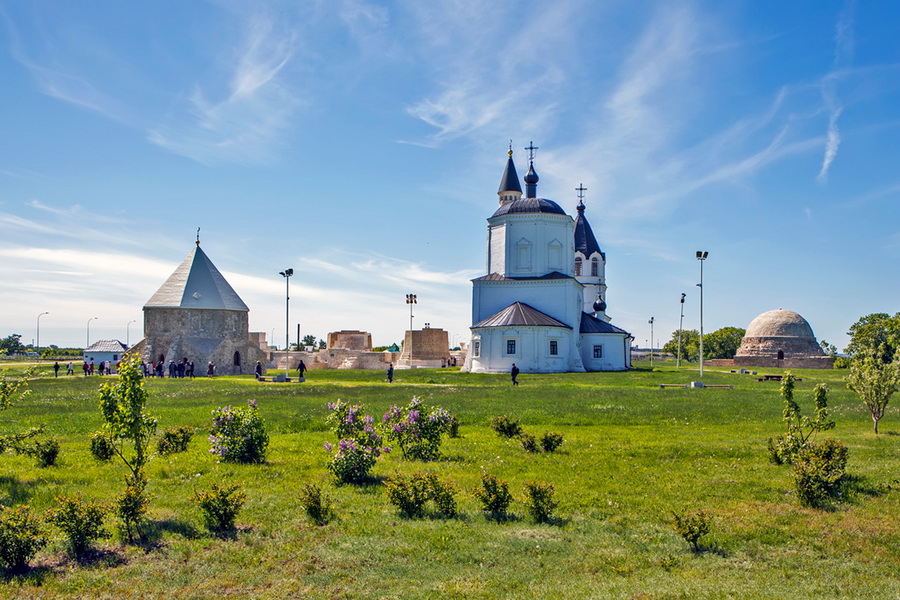
This area is an ancient settlement, which has preserved more than 100 Bulgarian and Tatar early-Islamic and medieval architectural creations VIII-XIV centuries. Moreover, this city was the capital of the Golden Horde in the XIII century. Here one can see buildings of both Russian and European styles. Native speakers say that the East and West meet here. The cathedral mosque and the remains of the great minaret, the northern and eastern mausoleums, the black and white chambers, the house with towers, the captain's well and the khan's tomb are a must-see.
Assumption Cathedral and Monastery of the town-island of Sviyazhsk
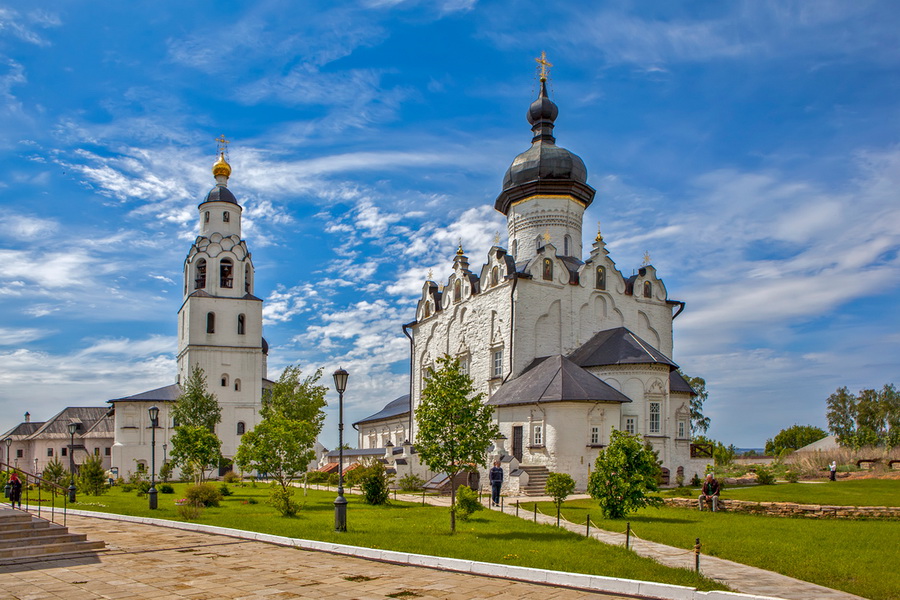
The unusual city was founded by Ivan the Terrible in the middle of the 16th century during his successful attempt to conquer the Khanate of Kazan. Almost immediately the Assumption Cathedral and the monastery of the same name were built there. Wall paintings of the cathedral are well preserved. They are unique examples of the Eastern direction of church painting. There are also a number of medieval temples and several historical artifacts on the territory of the monastery.
Landscapes of Dauria
The Daurian steppe is subject to constant climate change. Because of this, several ecosystems exist here, which have served to create a rich biodiversity. Meadows, fields, forests and wetlands are home to rare species of animals and birds. For example, the white-necked crane, swan goose and relict gull. The Mongolian gazelle also migrates through these territories. Daurian landscapes are under the auspices of UNESCO in Mongolia.
The Churches of the Pskov School of Architecture
Pskov boasts a collection of distinct cathedrals and churches that epitomize the city's architectural style, developed during the Middle Ages. This style continues to captivate architects and artists today. The earliest of these religious edifices were constructed in the 12th century, with the most recent dating back to the 17th century. They stand apart from other Russian churches due to an abundance of decorative features. Additionally, their surroundings, including approach roads, gardens, walls, and even fences, were all meticulously planned and designed.
Petroglyphs of Lake Onega and the White Sea
Over 4500 ancient petroglyphs dating back to the 5th and 4th millennia BC have been discovered in Karelia. These rock carvings are found in clusters, with 22 groups located in the Pudozhsky area of Lake Onega and another 11 groups in the White Sea region. The petroglyphs depict geometric shapes, various animals and birds, scenes of hunting, and hybrid entities that combine human and animal characteristics.
- Historical and Cultural Jeyrakh-Assa Reservation (included in 1996). It is located in Ingushetia. Besides burial vaults and pagan and ancient Christian temples, several famous Ingush tower complexes are located here: Erzy, Vovnushki and Targim.
- Historical center of Irkutsk (included in 1998). The old layout of the city founded in 1661 has been preserved here. The medieval residential quarters and temples, monuments and natural sights will not leave any tourist indifferent.
- Rostov Kremlin (included in 1998). This majestic white architectural ensemble, built in the middle of the 17th century, includes fortress walls, metropolitan residence, several churches as well as a reception palace and museum.
- Historical center of the Yeniseisk (included in 2000). The city, founded in 1619, was one of the largest in eastern Siberia. The white-stone Spaso-Preobrazhensky Monastery (1642) is one of the main attractions of the city. Today it is located in the historic center.
- Petroglyphs of Sikachi-Alyan (included in 2003). Rock paintings found in the Khabarovsk region date back to the X-VIII millennia BC. The petrographs depict people, animals, hunting scenes and shaman masks.
- Magadansky State Nature Reserve (included in 2005) occupies almost 900 thousand hectares and is divided into four areas. Coniferous and medicinal plants grow on each of them. There are also about 40 species of mammals, 32 species of fish and more than 180 species of birds.
- Commander Islands Biosphere Reserve (included in 2005). On these islands located in Kamchatka there is the Commander State Nature Reserve.Here are registered almost 400 species of plants, 32 species of mammals and 203 species of birds.
- The Great Vasyugan Mire (included in 2007). The swamp system located on the territory of four Russian regions is the largest in the world. It is about 550 kilometers long and about 270 kilometers wide.
- Krasnoyarsk Pillars (Stolby) (included in 2007). This is a national park with 290 animal species and almost 750 plant species. The park got its name from the picturesque rocks that look like pillars.
- Ensemble of the Astrakhan Kremlin (included in 2008). Construction of the Kremlin began in the middle of the 16th century. On the territory of the Kremlin almost all the towers and several churches have been preserved. Assumption Cathedral of the Kremlin, which was built in the 18th century, is considered an outstanding work of church architecture.
- The Ilmensky mountains (included in 2008). There are large deposits of topaz, ilmenite, monazite and other semi-precious minerals. The Ilmensky reserve is also located in the mountains.
- The archeological site of Tanais (included in 2009). These are the remains of an ancient settlement founded in the III century BC. Many artifacts have reached our days. The settlement is located on the territory of the modern Rostov region.
- Bashkir Ural (included in 2012). It is a natural and cultural complex, situated on 45 thousand hectares. There is a great variety of landscapes in Bashkir Urals: mountains, rivers, ridges, water reservoirs and many others.
- Kenozersky National Park - Russian Nature Reserve (included in 2014). Kenozersky National Park is located in the Arkhangelsk region. It is unique in that the nature has been preserved almost in pristine condition, untouched by man. There are a lot of forests, swamps and pastures. Also in this area have survived wooden houses and temples.
- Western Caucasus (renominated in 2014). Renomination occurred due to the fact that the existing UNESCO World Heritage Site was separated from the sites that do not meet the criteria of global value.
- Virgin Komi Forests (renominated in 2014). Renomination occurred due to the fact that it is supposed to expand the area of the current World Heritage site due to the increase of the territory of the Yugyd va National Park.
- Mamayev Kurgan Memorial Complex "To the Heroes of the Battle of Stalingrad" (included in 2014). This is an iconic place in Volgograd. This is where the famous battle took place during World War II. On the territory of the memorial complex there are 10 monuments, ruins of walls, "Motherland" and much more.
- Oglakhta Ridge (included in 2016). It is located in Khakassia and has great natural diversity: different landscape and dozens of species of animals, birds and reptiles. The Khakass Nature Reserve is located in part of this area.
- The historical center of the city of Gorokhovets (included in 2017). This city, founded in 1168, is located in the Vladimir region. There are three medieval monasteries and the Annunciation Cathedral, built in 1700, in the historical center. It is also worth paying attention to the seven merchant's chambers.
- Treasures of the Pazyryk Culture (included in 2018). These are unique petroglyphs and burial mounds of the VI-II centuries BC.
- Rock Painting of Shulgan-Tash Cave (included in 2018). This is one of the most famous sights in Bashkortostan - petroglyphs created no later than the 10th millennium BC were found here.
- Spaso-Preobrazhensky Cathedral with the medieval fortress wall of Pereslavl-Zalessky (included in 2019). The cathedral itself was built in the middle of the XII century and represents an early example of Old Russian white-stone architecture. The cathedral is surrounded by a defensive fortress wall.
- Vyatskoye village (included in 2019). This historic village, founded no later than 1502, is located near Yaroslavl. There are more than 50 monuments of the XVI-XIX centuries.
- Heritage of Chukotka Arctic Marine Hunters (included in 2019). This includes prehistoric settlements Naukan and Ekven, an ancient burial ground and the historical and cultural complex "Nunak".
- Divnogorye Historical and Cultural Complex (included in 2020). It is located in Voronezh Region and is a museum-reserve with a unique cultural landscape and stunning panoramas. There are also several cave temples and Mayak settlement of the IX-X centuries.
- Astronomical Observatories of Kazan Federal University (included in 2020). These are two observatories of the XIX century, which were created for observations and research. They are still in operation and are considered to be the foremost centers of astronomy development in Russia since the times of Russian Empire.
- National Park Kytalyk (included in 2021) is located in Yakutia. The main purpose of the natural site is to preserve the population of white cranes, which are included in the Red Book. The park is also home to 21 species of mammals, 91 species of birds, and many plants, including medicinal plants.
- Valley of the Kings of Tuva (included in 2021) is a special area that began to form in the first millennium BC. Thousands of burial mounds have been found here. Many of them form groups, suggesting burial of relatives.
- Denisova Cave (included in 2022). This object is located in the Altai region. It is here that the remains of a subspecies of humans "Denisovites" who lived in these territories between 200 and 73 thousand years ago were found.
- Bashkir Shikhans: Toratau, Yuraktau and Kushtau (included in 2022). These are three mountains located near Sterlitamak. Shikhans are the remnants of reef systems that existed almost 300 million years ago.
It would be quite a feat to visit all of Russia's UNESCO World Heritage sites in a single trip. Therefore, we suggest you start with the iconic locations in Moscow and St. Petersburg. Then, on subsequent visits, you can venture out to explore the other captivating sites sprinkled across the vast expanse of the Russian Federation.

